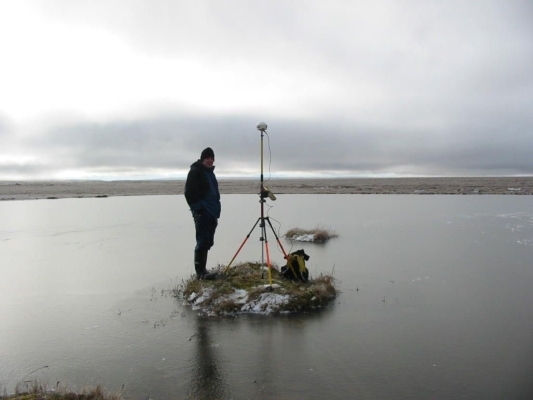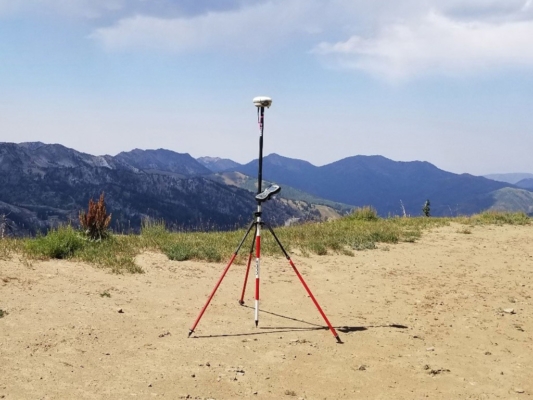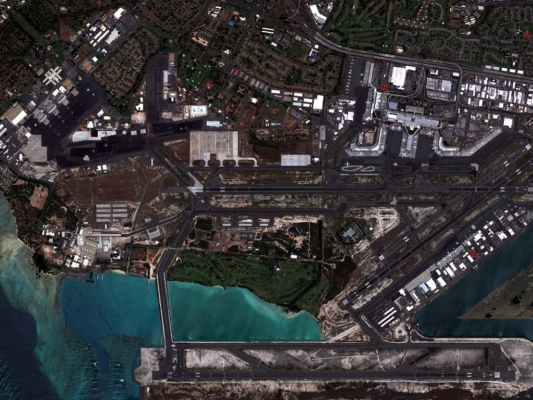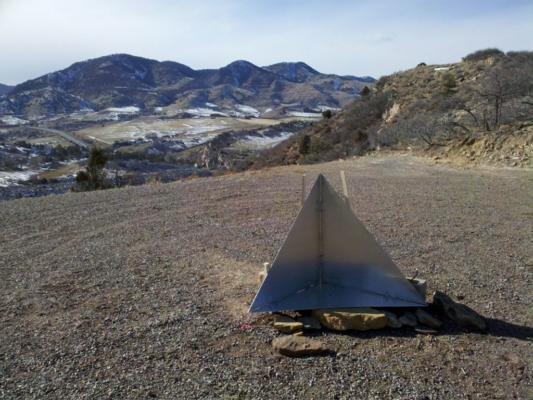Access the World’s Largest Commercially Available Ground Control Points Archive!
CompassData offers the largest commercial archive of Ground Control Points (GCPs) in the world—essential for enhancing the accuracy of satellite, aerial, drone, and LiDAR mapping projects.
Over 80,000+ High-Accuracy Ground Control Points Available Off the Shelf
You can instantly request access to our GCP archive. Download Ground Control Points as Esri Shapefiles to load into your GIS software or as KMZ files compatible with Google Earth Pro.
Whether you're processing drone imagery, satellite data, aerial photographs, or LiDAR scans, using Ground Control Points (GCPs) ensures true geospatial accuracy by providing verified “Ground Truth” coordinates that align your data with real-world locations.
Utilizing Quality-0 Ground Control Points during the orthorectification process can achieve absolute positional accuracy within twice the pixel size of the imagery—enhancing mapping precision, reducing geolocation errors, and minimizing the need for time-consuming data corrections or reprocessing.
Our global Ground Control Point archive is displayed on an interactive map where you can explore individual points, view photos, station diagrams, and detailed accuracy reports. Request access to download the full archive (truncated) in Esri Shapefile or Google Earth KMZ formats to integrate directly into your GIS or mapping platform.
Accuracy Levels of Ground Control Points
All Ground Control Points (GCPs) in the CompassData archive are validated through rigorous quality assurance protocols under our ISO 9001:2015 certified Quality Management System, ensuring reliable, high-accuracy geospatial data for professional mapping applications.
Each Ground Control Point is classified by accuracy level, defined using 95% Circular Error (CE) and Linear Error (LE) standards:
- Quality-0: Horizontal accuracy 1–5 cm, Vertical accuracy 1–5 cm
- Quality-1: Horizontal accuracy 5–10 cm, Vertical accuracy 5–10 cm
- Quality-2: Horizontal accuracy 10–20 cm, Vertical accuracy 10–20 cm
- Quality-3: Horizontal accuracy 20–50 cm, Vertical accuracy 20–75 cm
- Quality-4: Horizontal accuracy 50 cm–2.5 m, Vertical accuracy 75 cm–5 m
These defined accuracy levels help clients select the most appropriate Ground Control Points based on the precision requirements of their drone mapping, satellite calibration, LiDAR control, or orthorectification projects.
Ground Control Point Delivery & Data Format
Each Ground Control Point (GCP) from the CompassData archive is delivered with a complete, ready-to-use data package designed to integrate seamlessly into your GIS, remote sensing, or mapping workflow.
Deliverables includes:
- Coordinate File with latitude, longitude, elevation, projected Easting and Northing values, plus detailed metadata—available in text or spreadsheet formats
- Accuracy Report detailing positional precision and quality rating
- Image Chip showing the exact location of the Ground Control Point (GCP)
- Surveyor Site Sketch with visual documentation of the GCP placement
- High-Resolution Photos of the survey setup, including close-ups and views in all four cardinal directions
- Geospatial Files such as Esri Shapefiles and Google Earth KML for easy visualization and integration
Support is available for standard coordinate systems and geodetic datum conversions, ensuring compatibility with your specific project requirements.
Photo-ID Ground Control Points (GCPs) for Imagery and LiDAR

Photo-Identifiable Ground Control Points are readily available from the CompassData archive to support the production and QA/QC of satellite imagery, aerial photos, and LiDAR datasets.
These off-the-shelf Ground Control Points are visually distinguishable in imagery, making them ideal for precise orthorectification, accuracy assessments, and geospatial validation workflows—without the need for field deployment.
LiDAR NVA Control with Photo-ID Ground Control Points

CompassData’s Ground Control Points (GCPs) support Non-Vegetated Vertical Accuracy (NVA) control for LiDAR data production and QA/QC—without the need for time-consuming field surveys.
These photo-identifiable, off-the-shelf GCPs are ideal for validating LiDAR elevation accuracy and ensuring compliance with industry standards. Access immediate, high-precision GCP data for streamlined geospatial workflows and reliable vertical accuracy assessments.
Airport Photo-ID Ground Control Points (GCPs)

CompassData’s Ground Control Points archive includes strategically placed photo-identifiable GCP clusters near more than 1,100 airports worldwide. These airport Ground Control Points are processed using the FAA DO-200A standard, supporting both authoritative and commercial imagery production for global aerodrome mapping and analysis.
Ideal for orthoimage calibration, GIS updates, and aviation infrastructure planning, our airport GCPs ensure geospatial precision where it matters most.
Remotely Sensed Ground Control Points® (RSGCP®)

Remotely Sensed Ground Control Points® (RSGCP®) are precision photo-identifiable points derived from Synthetic Aperture Radar (SAR) and high-resolution imagery. Designed for remote mapping, these GCPs provide RS-1 Precision ≤ 1m or RS-2 Precision ≤ 3m, enabling accurate geolocation without field deployment.
RSGCPs are the ideal solution for satellite image calibration, orthorectification, and photo control in regions that are politically sensitive, inaccessible, or logistically difficult. Eliminate the need for onsite surveys while maintaining high geospatial accuracy.
Frequently Asked Questions FAQs
What are Ground Control Points in remote sensing and mapping?
Ground Control Points (GCPs) are precisely surveyed locations on the Earth’s surface with known geographic coordinates, used to georeference satellite imagery, aerial photos, LiDAR, and drone data. In remote sensing and mapping, GCPs serve as reference points to correct positional inaccuracies and tie digital data to real-world coordinates—essential for creating accurate maps and geospatial products.
Why are Ground Control Points important in aerial and satellite imagery?
Ground Control Points are vital for ensuring geospatial accuracy in aerial and satellite imagery. They provide fixed reference locations that align image pixels to precise geographic coordinates. This process, called orthorectification, removes distortions caused by camera angles, elevation changes, and sensor geometry—enabling consistent, measurable, and reliable imagery for GIS, surveying, and spatial analysis applications.
How do Ground Control Points improve mapping accuracy?
Ground Control Points (GCPs) significantly enhance mapping accuracy by serving as ground-truth references during image processing. When incorporated into photogrammetric workflows, GCPs correct distortions, improve spatial alignment, and reduce horizontal and vertical errors. This results in more accurate digital elevation models (DEMs), orthomosaics, and GIS datasets—especially important for high-resolution or engineering-grade projects.
What is the difference between Ground Control Points and Check Points?
While both Ground Control Points and Check Points are surveyed locations with known coordinates, they serve different purposes. Ground Control Points (GCPs) are used during image processing to calibrate and align data. Check Points, on the other hand, are reserved for post-processing accuracy validation—helping verify the spatial integrity of georeferenced imagery without influencing the processing itself. Together, they ensure high confidence in final geospatial products.
How are Ground Control Points collected?
Ground Control Points (GCPs) are typically collected using high-precision GPS, GNSS receivers, or total stations operated by trained surveyors. Field collection follows strict geodetic and quality assurance protocols, often in accordance with ISO 9001:2015-certified standards. Each GCP includes documentation such as site sketches, field photos, and metadata, ensuring transparency, repeatability, and accuracy in geospatial workflows.
What level of accuracy can be achieved with Ground Control Points?
The achievable accuracy of Ground Control Points (GCPs) depends on the survey method and quality classification. High-quality Ground Control Points (GCPs) can achieve centimeter-level precision, typically ranging from 1–5 cm for Quality-0 control points. Lower quality levels may provide accuracies within sub-meter to multi-meter ranges. Choosing the appropriate accuracy level is critical for applications such as infrastructure development, flood modeling, and precision agriculture..
Can Ground Control Points be used for drone mapping?
Absolutely. Ground Control Points (GCPs) are essential for enhancing the geospatial accuracy of drone mapping projects. By anchoring aerial imagery to known ground coordinates, Ground Control Points (GCPs) improve orthomosaic alignment, reduce geolocation drift, and boost overall positional accuracy—especially when GPS RTK/PPK is unavailable or insufficient. GCPs are a best practice for drone-based surveying, construction site monitoring, and asset inspection.
What file formats are Ground Control Points typically delivered in?
Ground Control Points (GCPs) are commonly delivered in a variety of industry-standard file formats, including ESRI shapefiles (SHP), Google Earth KML/KMZ, and CSV or TXT spreadsheet formats. These files include coordinate data (Latitude, Longitude, Elevation, Easting, Northing), metadata, and projection information—making them easy to import into GIS, CAD, remote sensing, and photogrammetry software environments.
Are Ground Control Points necessary for LiDAR data processing?
Yes, Ground Control Points are frequently used for LiDAR QA/QC and calibration, particularly in Non-Vegetated Vertical Accuracy (NVA) assessments. While LiDAR sensors can produce highly accurate elevation models, GCPs validate the vertical and horizontal accuracy of point clouds and digital terrain models. Using GCPs in LiDAR workflows enhances data confidence for applications such as flood modeling, terrain analysis, and infrastructure mapping.
What industries rely on Ground Control Points for accurate geospatial data?
Ground Control Points are a critical asset in multiple industries that require precise, georeferenced spatial data. These include land surveying, civil engineering, construction, urban planning, forestry, agriculture, defense, mining, and environmental monitoring. GCPs ensure that remote sensing and mapping outputs meet regulatory standards, engineering specifications, and operational accuracy needs across a wide range of geospatial applications.
 CompassData, Inc.
CompassData, Inc.